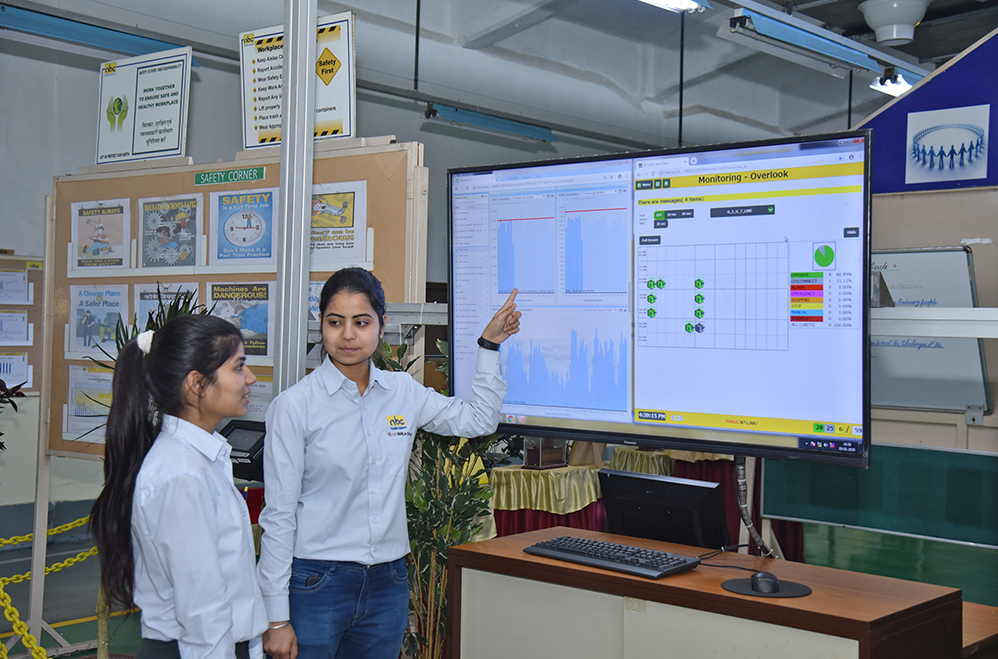
Going by the current demand, both locally and internationally, the industry is likely to see double-digit growth in the coming years, says Rohit Saboo, President and CEO, National Engineering Industries Ltd.

Increased buying power, huge domestic market and fast developing infrastructure have together fuelled steady growth in the Indian automotive components manufacturing segment for the last few years. However, the last two years of the pandemic forced a slowdown, which saw the automobile component industry’s annual turnover dip to Rs 3.40 lakh crore (USD 45.9 billion) in FY21, a 3% decrease from the previous year. Even the exports saw a drop by 8.28% to Rs 0.98 lakh crore (USD 13.3 billion) in FY21 from Rs 1.02 lakh crore in FY20. But things are beginning to shape up again for the industry. With both imports and exports witnessing an upsurge, the first half of 2021-22 saw a turnover of Rs 1.96 lakh crore, an almost 65% growth in the automotive components industry.
Going by the current demand, both locally and internationally, the industry is likely to see double-digit growth in the coming years. Even as the pandemic slowed down manufacturing and disrupted supply chains, it taught us some invaluable lessons. As a country, we learnt to minimise our reliance on imported products and consider developing a strong domestic supplier ecosystem. The entire automotive component industry went through an incredible learning curve in terms of boosting supply chain processes, adopting technology and managing resources judiciously. In this phase of the pandemic, the global original equipment manufacturers (OEMs) are now contemplating the China Plus One strategy to develop alternative suppliers. This provides us with adequate opportunities to enhance our production capabilities at the earliest.
The India Quotient
The Auto Component Manufacturer Association (ACMA) estimates suggest that the automotive component exports from India will touch USD 80 billion by 2026. The shift in global supply chains also predicts an expansion in the Indian global automotive component trade by 3-4%. It is the best time for Indian automotive component manufacturers to start planning production, maintaining buffer inventories, predict demand and begin developing robust supply chains. It is also essential to work on evaluating alternate supply chains for big suppliers. And with the centre pushing for a self-reliant India along with its emphasis on ‘Make in India’, it is a favourable period to bolster our capabilities inwards.
Forward-looking government policies have been introduced to provide a thrust to the sector. These include extension of the Faster Adoption and Manufacturing of Hybrid and Electric Vehicles (FAME II) scheme with a budget outlay of Rs 10,000 crore until 2024, augmentation of incentives for two-wheelers and the outlay of Rs 26,000 crore under the production-linked incentive (PLI) scheme for automobile and automotive component sector. The more recently announced scheme of Rs 76,000 crore for semiconductor manufacturing over six years is also good news for the automotive industry.
The Government’s Role
What more can the government do to support the automotive component industry? To push the local industry, it is now important for the government to extend the PLI scheme from OEMs to Tier I and Tier II suppliers as they form an integral part of the entire automotive component ecosystem. Currently, the OEMs are the biggest beneficiaries. And in the coming times, it will only be right to incentivise smaller suppliers as they provide support to larger domestic industries. The government should have policies which encourage ease of doing business and ensure ready availability of capital at low rates for industries, viable logistics and low-energy costs – all prerequisites for safeguarding the interests of domestic industries. There are demands for reduction in GST and incentive-based scrappage policy from certain sections of the industry.
Role of the Industry
What should the industry do to stay ahead in the game? Adaptability to digital technology and unavailability of skilled labour are major constraints limiting growth in the sector. Some Tier I industries are beginning to digitalise their supply chains, optimising the inventory and predicting machine breakdowns using data analytics. However, there is still a long way to go. To stay ahead in the race, it is necessary to make investments in technology and work towards fully digitalising manufacturing and non-manufacturing operations in the coming years. For example, the Internet of Things (IOT) platform, Industrial Internet of Things (IIoT) network, cloud and edge computing, robotic process automation, augmented or virtual reality, etc. are all essential additions.
India, which once used to be a labour-intensive market, is fast shifting to automation and this change is needed for improved quality and overall effectiveness of equipment. Most large-sized manufacturers are beginning to remotely manage their industrial processes using data analytics and others may need to follow suit. In the current climate of digitalisation, it is also critical to upskill or reskill the existing workforce. It is for industries to set up digital academies for training both blue and white-collared employees not just in data sciences but also in using the output of it.
Economies of Scale
Indian manufacturers need to start thinking big. The domestic market is large and growing, but it is also important to work towards becoming a state-of-the-art automotive value chain, contributing to the world market. Also, big-ticket international businesses will help in considerably reducing manufacturing costs. We need to develop India into an attractive source of high-quality, competitively priced, high-end automotive components. Data released by the Department for Promotion of Industry and Internal Trade (DPIIT) show that the foreign direct investment (FDI) inflow into the Indian automotive industry during the period April 2000-June 2021 stood at USD 30.51 billion.
Focus on Research and Development
It is vital for the research and development teams to be ready for several concomitant changes, transforming the whole automotive industry. Automotive component players and OEMs need to look for opportunities to shield and expand their market share. Shift to electronic mobility is real and is here to stay, and it is now for manufacturers to start arming themselves for the imminent disruption. The transition from ICE vehicles to electronic will occur in a phased manner, giving time to the industry to transition to a different product range. In times to come, the demand for ICE vehicle components is expected to drop sharply.

To be future ready, it is also prudent to develop the right collaborations globally and for OEMs to carve out their electric mobility paths. It is also essential to create the right assets and skill-sets to prepare for the demands of the electric vehicle (EV) industry in order to be able to thrive in the future. Going forward, it is important to have dedicated research and development wings to conduct studies in specialised areas such as product design, tribology and lubrication, virtual simulation, latest material and processes, and testing. There must be a concerted effort towards developing new-age research tools and patent filings. Currently, India ranks 10th in patent filings when compared with China which secured the first spot.
The Way Ahead
The automotive component industry accounts for 2.3% of India’s GDP and is an essential pillar of the country’s economy. While we have long relied on Chinese imports and this dependency cannot end abruptly, what we need is a long-term, well-defined plan to build and scale up our domestic capabilities. The future is bright for India, and we need to stay focussed and battle-ready.